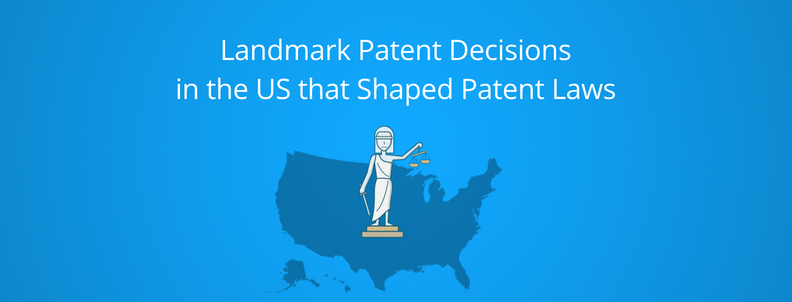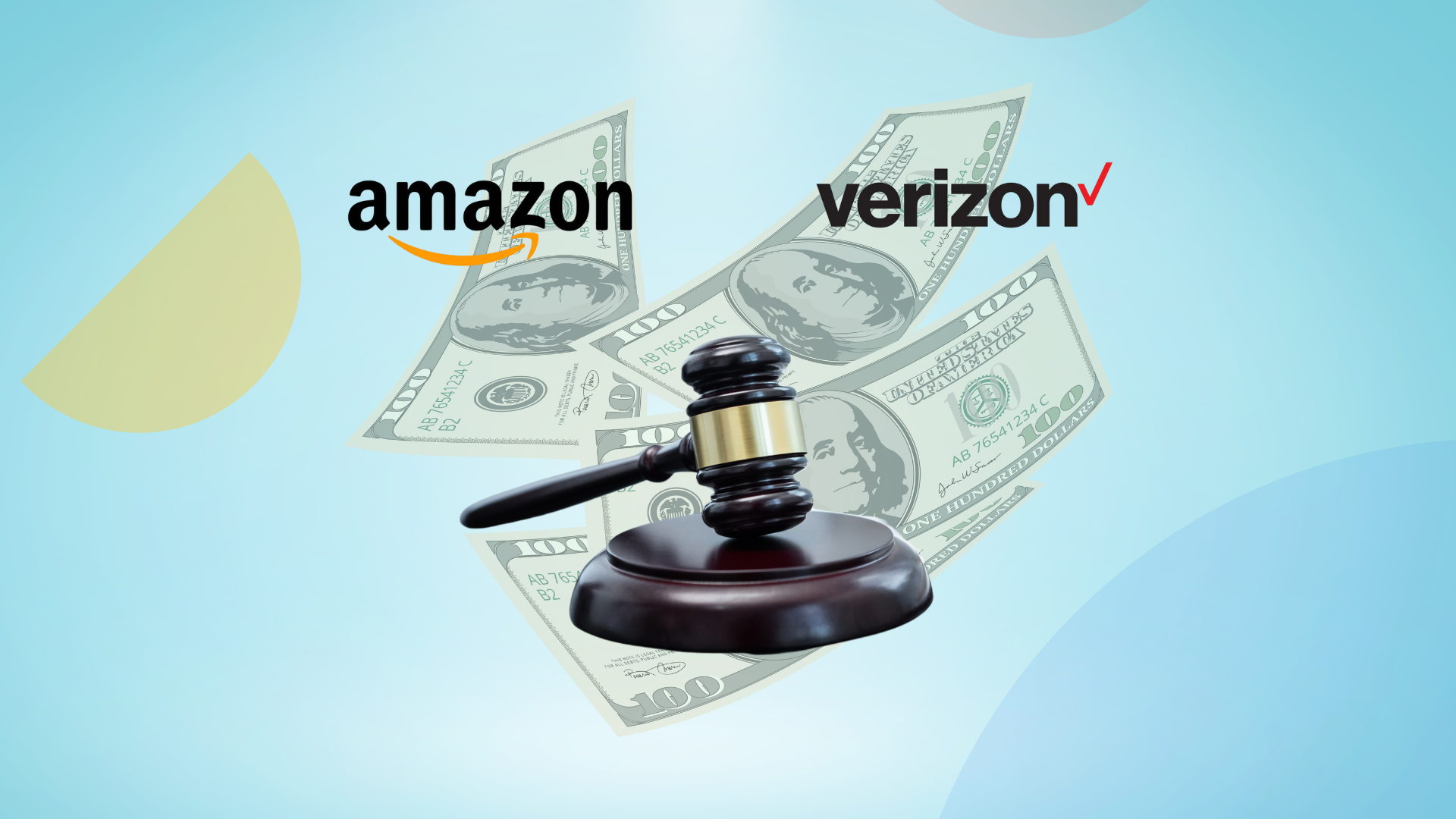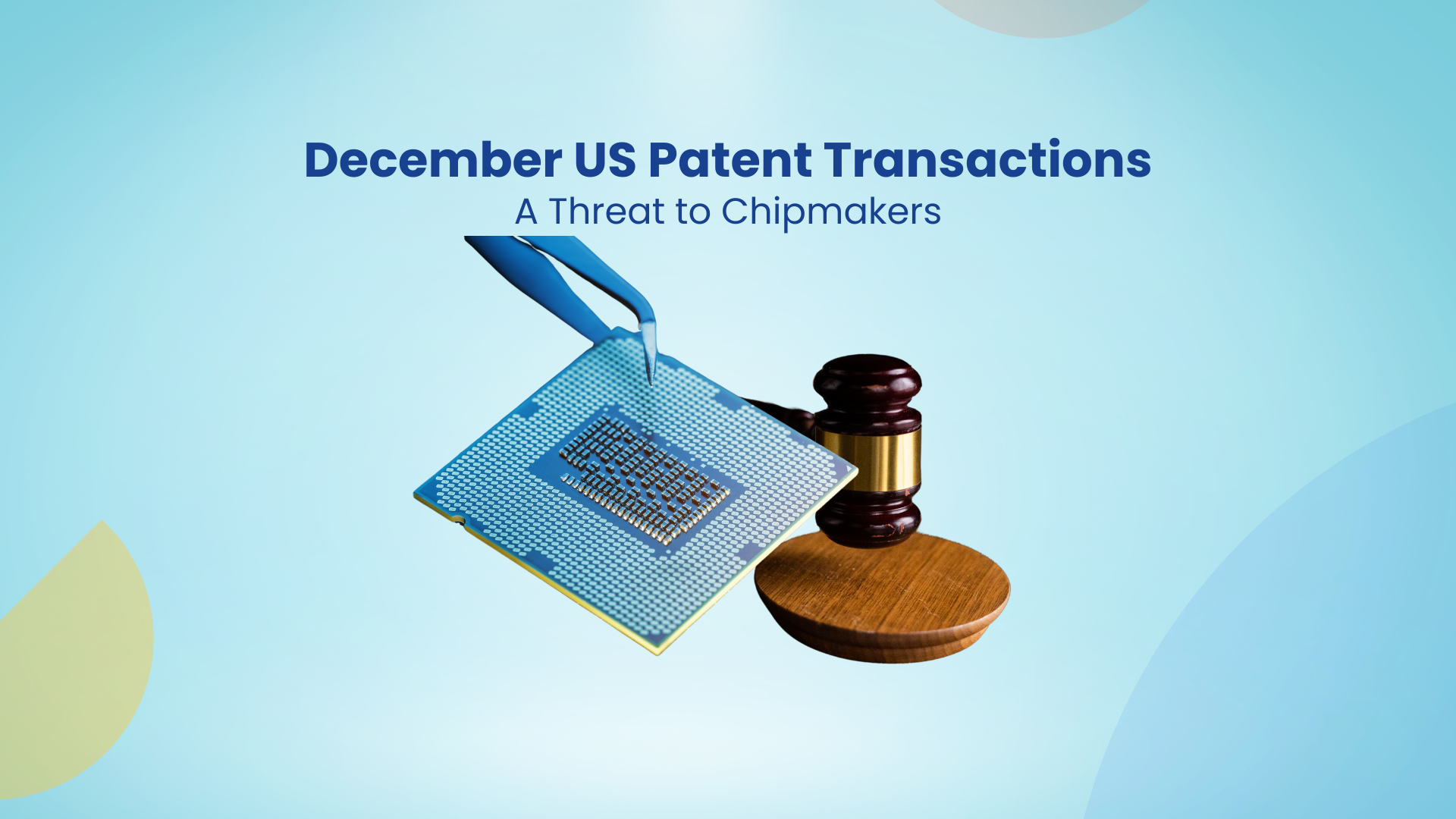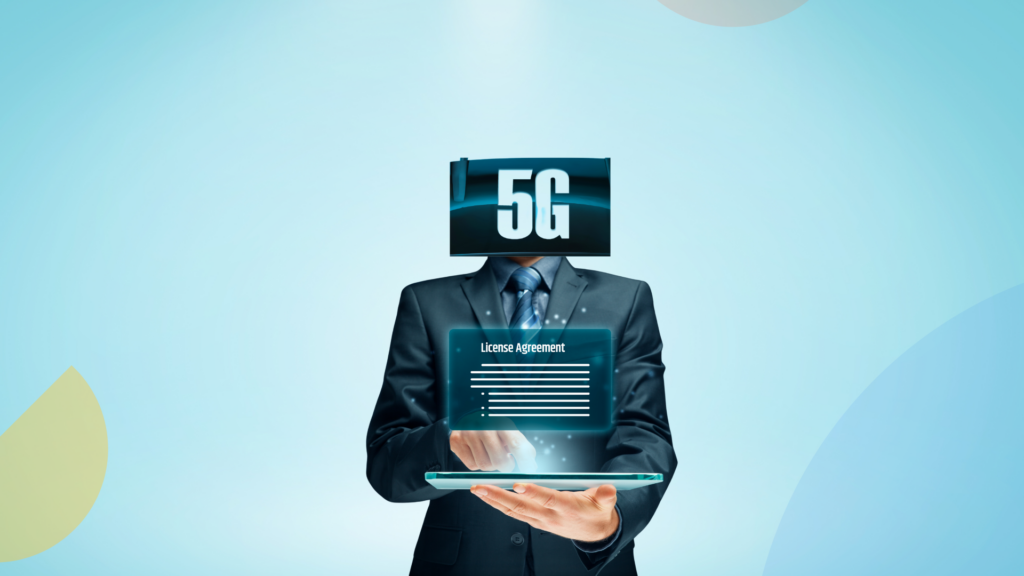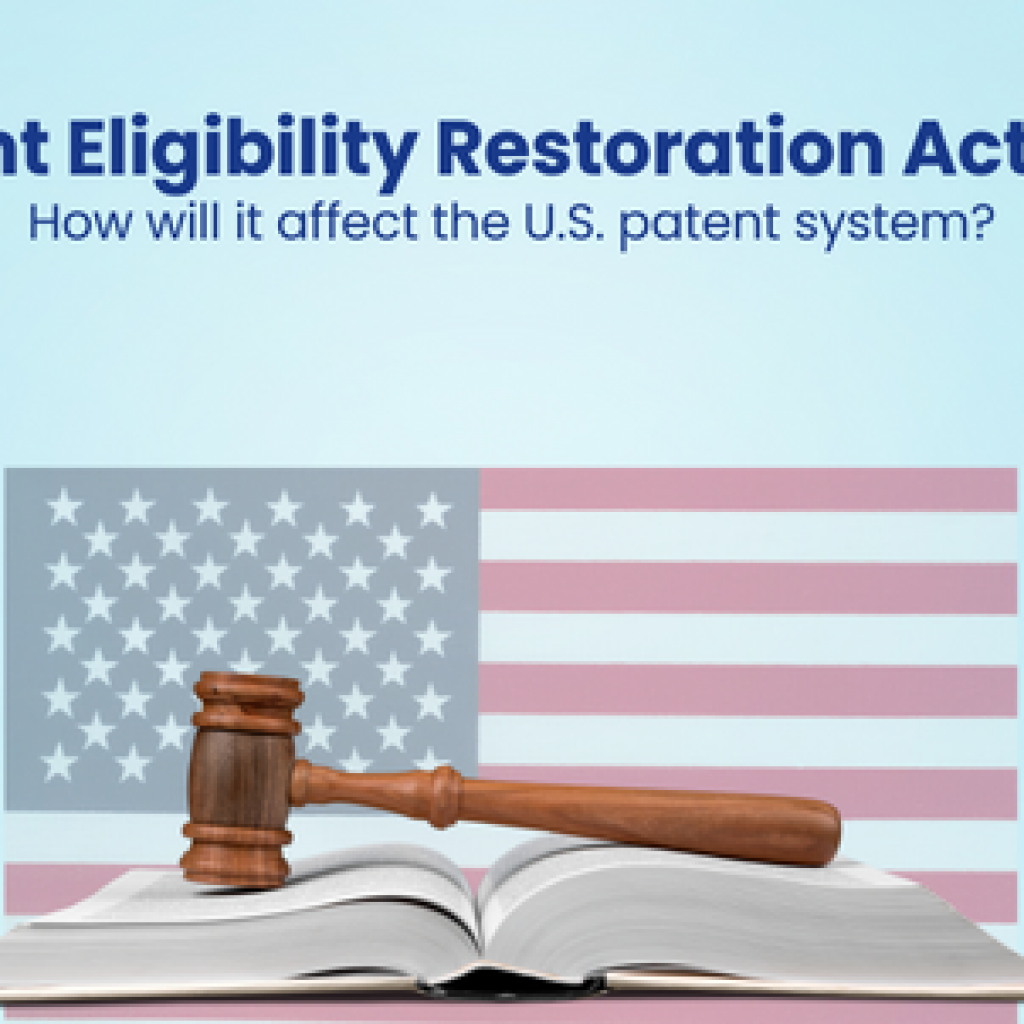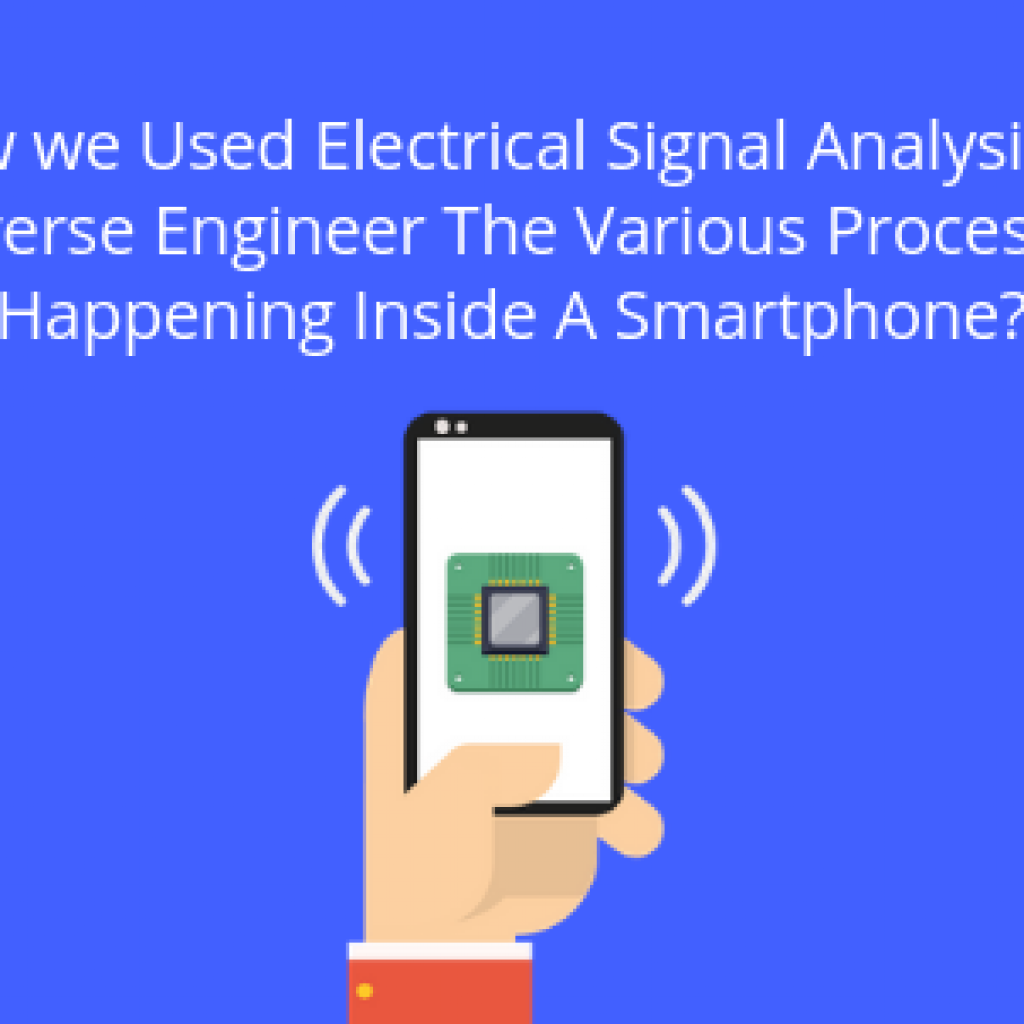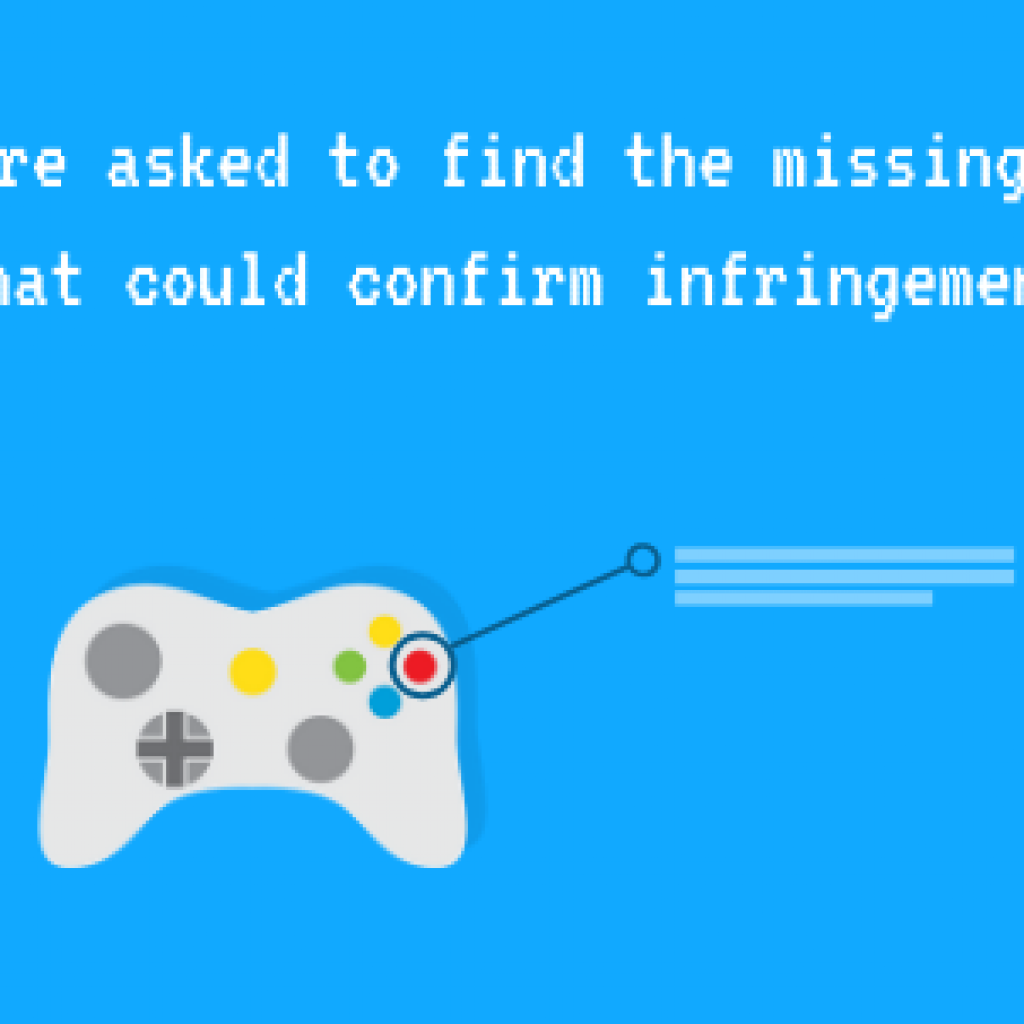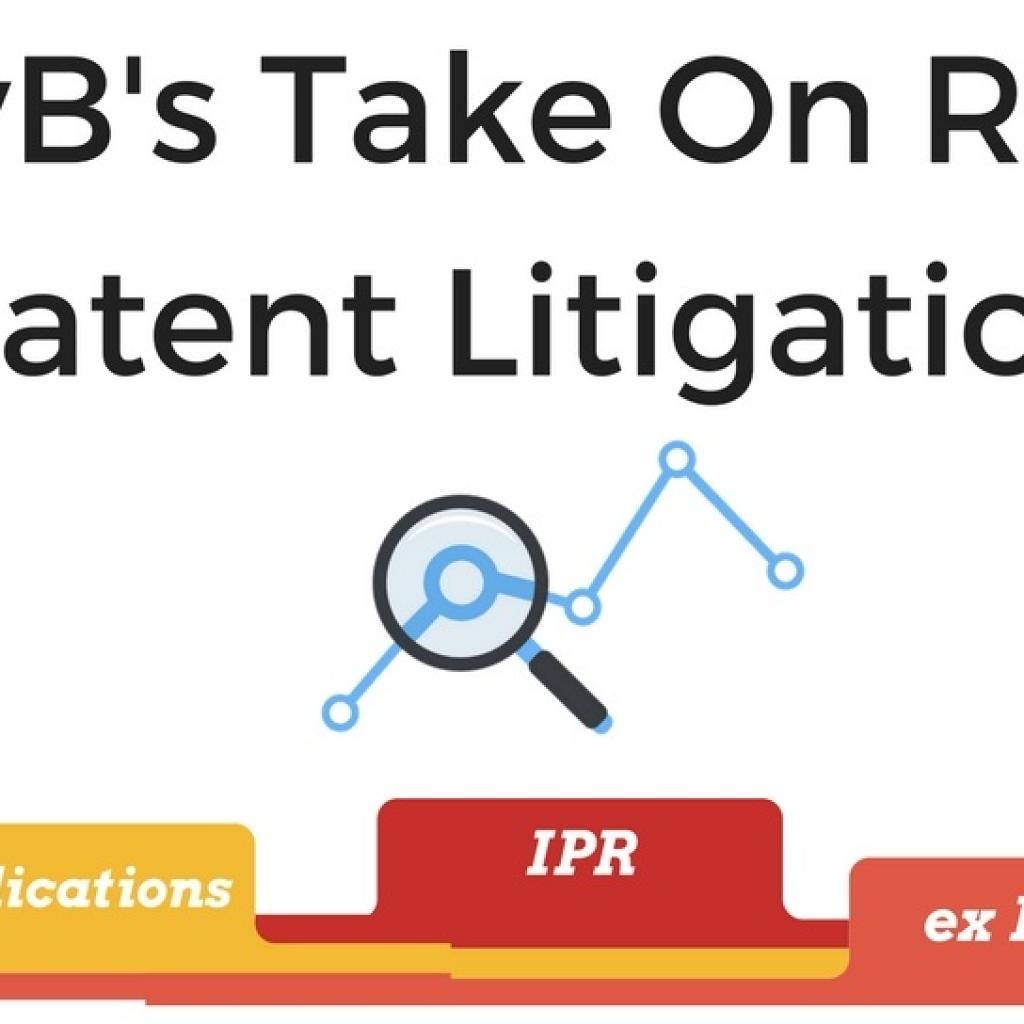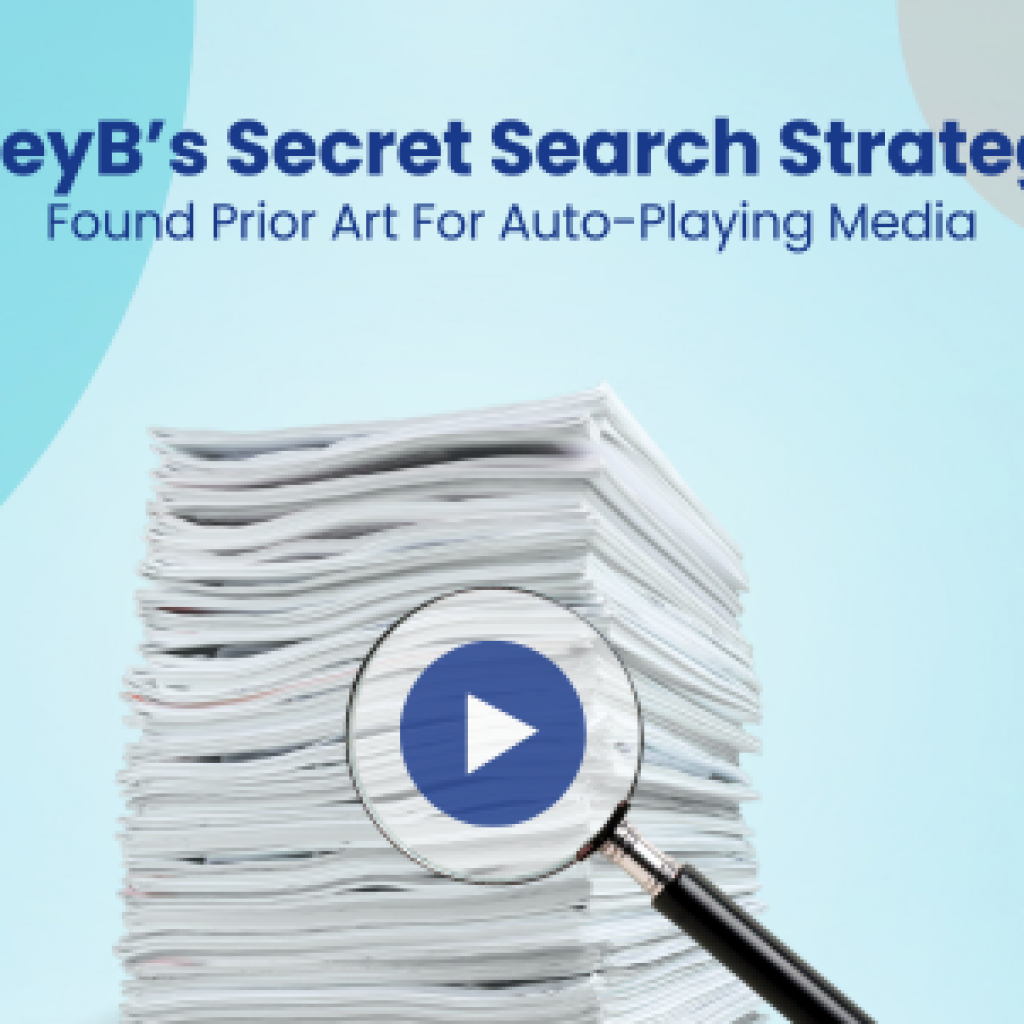The patent system that exists today in the US is a result of multiple decisions and verdicts that shaped the course of history for patent laws. Some decisions were minorly significant, while others had a major impact and changed laws on patentability and how patents were perceived.
Every verdict changed some aspects of patent law or another. While some shaped the laws on the patentability of genetically modified organisms, others redefined the criteria for the determination of patent eligibility. Some others questioned the patentability of abstract ideas, natural phenomenon, and laws of nature, while another shaped the law on the patentability of artificially created genes. Some of the most notable decisions in the list were focused on the patentability of inventions related to software, be it in the form of claims or an intermediate step in the process or perhaps, the patent eligibility of subject matter in form of software, even if the claims cover an abstract idea in the first place.
Not just this, there were few other noteworthy patent infringement cases in the history of US patent laws too, which shaped the decisions on – the invalidation of patents (in case they’re vague), the scenarios in which an injunction could (and could not) be issued, the difference between the repair and reconstruction of a patented product, and most importantly, the doctrine of patent exhaustion and its scope.

We have discussed all these cases in detail below, and you could scroll down in a sequence and get to know everything you’d want to know, or if you’re interested in a particular section, or a particular case perhaps, you can jump directly to it by clicking on the respective link from the table of contents below.
US Patent Infringement Cases 2024:
Patentability Cases
Diamond v. Chakrabarty (SCOTUS 1980)
Diamond v. Chakrabarty, 447 U.S. 303 (1980), was a case of the United States Supreme Court which dealt with whether organisms that are genetically modified can be patented or not. Ananda Mohan Chakrabarty was a Genetic engineer who was working for General Electric. He had created a bacterium that was derived from the Pseudomonas genus – presently known as Pseudomonas putida. This bacterium was competent of breaking down crude oil, which he offered to use in the treatment of oil spills. General Electric later filed a patent application for the bacterium with the USPTO – with Chakrabarty being stated as the inventor – but the application was denied by a patent examiner. The reason behind being that under the patent law at that time, living things were generally not considered as a patentable subject matter under Section 101 of Title 35 U.S.C.
The Board of Patent Appeals and Interferences agreed with the original decision. However, the United States Court of Customs and Patent Appeals ruled the case in Chakrabarty’s favor, explaining:
“The fact that micro-organisms are alive is without legal significance for purposes of the patent law.”
Sidney A. Diamond, Commissioner of Patents and Trademarks, appealed to the Supreme Court to overturn the ruling. The case was argued in SCOTUS on March 17, 1980, and was decided on June 16, 1980. In a 5–4 ruling, the court decided in favor of Chakrabarty, affirming that “a live, human-made micro-organism” is a patentable subject matter under 35 U.S.C. § 101. Respondent’s micro-organism consists of a “manufacture” or “composition of matter” inside that statute.
The decision was written by Chief Justice Warren E. Burger and was joined by Potter Stewart, Harry Blackmun, William Rehnquist, and John Paul Stevens. Justice Burger presented the following opinion in front of the court with respect to statutory interpretation, taking into account 35 U.S.C. § 101, which states:
“Whoever invents or discovers any new and useful process, the machine, manufacture, or composition of matter, or any new and useful improvement thereof, may obtain a patent therefor, subject to the conditions and requirements of this title.”
He further added – We have cautioned that courts “should not read into the patent laws limitations and conditions which the legislature has not expressed.” (United States v. Dubilier Condenser Corp, 289 U.S. 178 (1933)).
In concern to the scope of the original legislation, he wrote: In choosing such expansive terms as “manufacture” and “composition of matter” modified by the comprehensive “any”, Congress plainly contemplated that the patent laws would be given broad scope. Finding that Congress had planned patentable subject matter to “include everything under the sun that is made by man,” he finished: “Judged in this light, respondent’s micro-organism plainly meet the criteria as patentable subject matter. His claim is not to a hitherto unknown natural phenomenon, but to a nonnaturally occurring manufacture or composition of matter — a product of human ingenuity having a distinctive name, character, and use.”
Bilski v. Kappos (SCOTUS 2010)
Bilski v. Kappos, 561 U.S. 593 (2010), was a case presented in the Supreme Court of the United States, in which it was held that the machine-or-transformation test is not the sole test for determining the patent eligibility of a process, but rather “a useful and important clue, an investigative tool, for determining whether some claimed inventions are processes under § 101.” While doing so, the Supreme Court affirmed the rejection of an application for a patent on a method of hedging losses in one segment of the energy industry by making investments in other segments of that industry, on the basis that the abstract investment strategy set forth in the application was not the patentable subject matter.
The Court confirmed the judgment of the Federal Circuit in re Bilski. However, it disapproved of the machine-or-transformation test as the sole test of patentability based on an interpretation of the language of § 101. The Court dismissed the Federal Circuit’s statutory interpretation concern with the word “process,” ruling the definition in § 100(b) to be enough without modeling to the canon of noscitur a sociis.
Note: Section 100(b) defines process as “process, art or method, and includes a new use of a known process, machine, manufacture, composition of matter, or material.”
The Court also referred to Gottschalk v. Benson and Parker v. Flook and noted that both had explicitly denied being dependent on the machine-or-transformation test as the sole test for patent eligibility. A categorical exclusion of business method patents was also rejected from eligibility being given the reason that the definition of “process” in § 100(b) includes the word “method,” which appears to comprehend some forms of business method patents. 35 U.S.C. § 273(b)(1) also provides a defense to patent infringement prior use of a “method of conducting or doing business.” By acknowledging the defense, the statute also acknowledged the possibility of business method patents.
The Court regarding Bilski’s claimed subject matter found that his method of optimizing a fixed bill system for energy markets was an unpatentable abstract idea. Despite taking a broader reading of patent eligibility for processes, in accordance with the majority, the court ruled that “this Court by no means desires to preclude the Federal Circuit’s development of other limiting criteria that further the Patent Act’s purposes and are not inconsistent with its text”.
In Justice Kennedy’s opinion in plurality section (an overall Court minority view), he notes that severe adherence to only “the machine-or-transformation test would create doubt as to the patentability of software, advanced diagnostic medicine techniques, and creation based on linear programming, data compression, and the manipulation of digital signals” but “the Court today is not giving statement on the patentability of any typical invention, let alone holding that any of the above mentioned technologies from the Information Age should or should not receive patent protection.” Kennedy also further added that a categorical exclusion of some types of business methods from patent eligibility might be rightful if that rule relied on the idea that merely abstract ideas are not patentable.
Also Read
Laws of Nature, Physical Phenomena, and Abstract
O’Reilly v. Morse (SCOTUS 1854)
O’Reilly v. Morse, also known as “The Telegraph Patent Case” revolves around another decision given by the United States Supreme Court in 1854. The decision has been highly significant in the development of the law of patent eligibility in concern to the claimed inventions in the field of the computer-software related art. It holds, particularly, that an abstract idea, apart from its accomplishment, is not patent-eligible.
In the Court’s opinion, the problem that would-be telegraphers faced in the early 19th century is explained clearly:
“The great obstruction in their way was the fact that the galvanic current, however strong in the start, became steadily weaker as it superior on the wire; and was not competent enough to create a mechanical effect after a positive distance had been traversed.”
Thousands of volts and high currents were required to send a signal from Baltimore to Washington. It was not feasible at a time when managing to make a pickled frog’s legs twitch was the major achievement of the electro-galvanic force. The plan laid by Samuel Morse was of combining two or more electric or galvanic circuits, with self-regulating batteries for the point of defeating the diminished force of electromagnetism in long circuits. Morse inserted the relays(or “repeaters” as the opinion terms them) at adequately small intervals (say, every 15 to 20 miles) so that the signal was frequently reinstated to its initial level before noise could marsh it out.
The Court explained that while the case connected to a number of other issues, including whether Morse was actually the first one to create the telegraph, the issue of lasting significance concerned Morse’s eighth claim, which was channeled to a method of communicating intelligible information to any distance byways of exploiting the electromagnetic force:
Eighth. I do not advise to limit myself to the precise machinery or parts of machinery explained in the foregoing specification and claims; the spirit of my creation is the use of the motive power of the electric or galvanic current, which I refer to electromagnetism, however, made for marking or printing comprehensible characters, signs, or letters, at any distances, being a new application of that power of which I claim to be the first inventor or discoverer.
The explanation to the creation of Morse was given by Justice Taney which was the opinion of the majority of the Court, which said “He claims the restricted right to every improvement where the motive power is the electric or galvanic current, and the result is the marking or printing intelligible characters, signs, or letters at a distance”. Although “it required the highest order of mechanical skill to carry out and adjust the nice and fragile work needed to put the telegraph into process,” Morse did not “invent” what he claimed: “Professor Morse has not exposed that the electric or galvanic current will for all time print at a distance, no matter what may be the form of the machinery or mechanical set-up through which it passes.”
“In fine, he claims a select right to use a manner and procedure which he has not described and indeed had not invented, and therefore could not explain when he obtained his patent. The court is of the opinion that the claim is too broad, and not warranted by law.“
In reaching the conclusion that Morse’s claim 8 was too broad and thus not subject to patent protection, the Court considered not only the fact that Morse did not teach and enable other ways to communicate information at a great distance by using the electromagnetic force, but also whether the claim was at such a high level of generality and abstraction that it claimed an “idea” rather than a practical application and implementation of an idea.
Lab Corp of America v. Metabolite Inc. (SCOTUS 2006)
LabCorp v. Metabolite, Inc., is a court case that was linked to the patentability of scientific principles which the U.S. Supreme Court agreed to hear and later dismissed in 2006.
In 1999, Metabolite took legal action against LabCorp for infringement of a patent covering a diagnostic test. The claims of Metabolite’s patent include the correlation between levels of homocysteine and vitamins B6 and B12. A jury ordered LabCorp to pay $4.7 million in damages and the choice was upheld by a federal court, which further stated that doctors were ‘directly infringing’ Metabolite’s patents each time such a test is ordered and interpreted. LabCorp argued that the correlation is a principle of nature, and therefore the patent should never have been granted.
The court dismissed the case, although Justice Breyer, Justice Stevens, and Justice Souter dissented from this decision. Breyer’s dissenting opinion cited various cases in which technological and mathematical principles had been held to be patent-ineligible, including O’Reilly v. Morse and Gottschalk v. Benson.
If the case had been heard and Metabolite’s patent invalidated, it would have broad implications for biotechnology companies, which may have extended far beyond the patentability of correlations of biomarkers to disease states.
Metabolite’s brief to the court suggested that overturning the patent might lead to the invalidation of all drug patents on the grounds that the inventors “merely discovered that certain chemicals interact with the human body in ways directed by chemistry.”
In Mayo v. Prometheus, in 2012, the Supreme Court held what the dissenting Justices argued for in this case. That did not lead, however, to the cancellation of all drug patents on the grounds that the inventors “merely discovered that certain chemicals interact with the human body in ways directed by chemistry,” at least not as of 2015.
Mayo Collaborative Services v. Prometheus Laboratories
Mayo v. Prometheus, 132 S. Ct. 1289 (2012), was a case decided by the Supreme Court of the United States that unanimously held that claims directed to a method of giving a drug to a patient, measuring metabolites of that drug, and with a recognized threshold for efficacy in mind, deciding whether to amplify or reduce the dosage of the drug, were not patent-eligible subject matter. It was a controversial decision with proponents claiming it frees clinical pathologists to practice their medical discipline, and critics claiming that it undermines patent law and will stunt investment in the field of personalized medicine, preventing new products and services from emerging in that field.
The case arose in a dispute between Mayo Collaborative Services and Prometheus Laboratories relating to a diagnostic test. This case involved two US patents: US6355623 and US6680302, which were owned by Hospital Sainte-Justine in Montreal (Prometheus is the exclusive licensee). The patents concerned the use of thiopurine drugs in the action of autoimmune diseases, such as Crohn’s disease and ulcerative colitis. The problem is different people metabolize these drugs differently, so doctors have to work with patients to find the right dose.
Now Prometheus had the patent on how to properly treat patients using thiopurine drugs that included an administering step in which a doctor would administer the drug to the patient, a determining step in which the doctor measures the metabolite levels in the patient’s blood, and a step to either increase or decrease the dosage based on the results. Prometheus sold diagnostic tests based on the patent, and Mayo bought and used those diagnostic tests. However, in 2004, Mayo announced it would begin to use and sell their own test without buying the kit from Prometheus. In June 2004, Prometheus sued Mayo for infringement in the Southern District Court of California, and in March 2008, the district court held the patents invalid under Section §101.
The District Court characterized the claims as having three steps: (1) administering the drug to a subject, (2) determining metabolite levels, and (3) being warned that an adjustment in dosage may be required. The court found that the first two steps were just “data-gathering”, leaving the third step as merely an unpatentable mental step, comprising the correlation, because no step required a change in administered dose. Further, the court found that the inventors of the patents did not invent the correlation, because the metabolites detected according to the patent claims “are products of the natural metabolizing of thiopurine drug, and the inventors merely observed the relationship between these naturally-produced metabolites and therapeutic efficacy and toxicity. Having determined that the claims encompass the correlations themselves”, the District Court held that the claims “wholly preempt” the correlations.
These two findings—that the claims cover only natural phenomena, and that the claims cover any application of the natural phenomena—led squarely to a rejection under §101.
Prometheus appealed the decision, and in September 2009, the Federal Circuit reversed the District Court findings and ruled that the claims were patentable. The Federal Circuit found that the District Court erred in its analysis of the first two steps and ruled that these steps were not just “data gathering”, but rather called for two physical transformations—first administering the drug to the patient, which transforms the patient, and secondly measuring the metabolites, which involves several concrete, transformative steps. The Federal Circuit relied on its own decision In re Bilski in this analysis; in that decision, the court stated that if a method requires a specific machine for its implementation, or involves a physical transformation, it is patentable.
Mayo appealed to the Supreme Court, and the case was argued in December of 2011. The court handed down a unanimous decision on March 20, 2012, reversing the decision by Federal Circuit and basically reiterating the findings of the District Court. The supreme court called the correlation between the naturally-produced metabolites and therapeutic efficacy and toxicity to be an unpatentable “natural law” and found the first two steps to be not “genuine applications of those laws rather drafting efforts designed to monopolize the correlations.”
The court also added, “Because methods for making such determinations were well known in the art, this step simply tells doctors to engage in well-understood, routine, conventional activity previously engaged in by scientists in the field. Such activity is normally not sufficient to transform an unpatentable law of nature into a patent-eligible application of such a law.“
A commentator summarized the entire ruling as follows: “The conclusion here is that: a newly discovered law of nature is itself unpatentable and the application of that newly discovered law is also normally unpatentable if the application merely relies upon elements already known in the art.”
Association for Molecular Pathology v. Myriad Genetics (SDNY 2010, Fed Cir 2012, SCOTUS 2013)
During the term in the year 2013, the U.S. Supreme Court ruled in a dispute related to a patent on genetic tests for particular genes that amplify the risk of breast and ovarian cancer. The patent allowed Myriad Genetics a monopoly on a genetic test that occupied isolating natural deoxyribonucleic acid (DNA) strands and making synthetic complementary DNA (cDNA) that mirrored the unique isolated strands with slight alterations. The Court ruled that unnaturally created cDNA is patentable, while DNA which is isolated naturally is not.
Under the long-held rule, the Supreme Court considered Myriad’s claims that “laws of nature, natural phenomena, and abstract ideas are not patentable”, they are the parts of creation important for science and technology. Yet, patents serve to support invention by making sure some degree of profitability. The Supreme Court explained, “Patent protection strikes a delicate balance between creating ‘incentives that lead to creation, invention, and discovery’ and impending ‘the flow of information that might permit, indeed spur invention”.
Thus, the question which came in front of the Court was whether Myriad’s patents pertain to a “new and useful composition of matter” or simply “naturally occurring phenomena.” In an undisputed decision, the Court ruled that cDNA is patentable, while segmented, natural DNA is not. The Court explained regarding segmented DNA that, although Myriad “found an important and useful gene, … separating that gene from its surrounding genetic material is not an act of invention”.
Myriad’s patents’ descriptions cleared the iterative procedure and wide efforts that led to the identification and isolation of the gene sequences. However, the process of finding does not unavoidably yield a patentable creation where the discovered item is naturally occurring. Myriad attempted to argue that the act of cutting chemical bonds to isolate the DNA creates a non-naturally occurring molecule. However, the patent asserted by Myriad covered any segment consisting of the related sequence of nucleotides, not a specific molecule with a certain chemical composition. On the other side, cDNA is not physically occurring. In cDNA, “The noncoding regions have been removed.” The petitioners argued that, despite this modification, cDNA is not patent-eligible because the succession of nucleotides is uttered by nature, just fake into an exons-only version. The Court disagreed, holding that even though the cDNA follows the nucleotide series of the natural DNA segment and retains its obviously occurring exons, the cDNA is a new formation and, therefore, patentable.
Abstract Ideas & Software Patent Cases
Diamond v. Diehr (SCOTUS 1981)
Diamond v. Diehr, 450 U.S. 175 (1981), was a United States Supreme Court decision that held that controlling the execution of a physical process, by running a computer program did not preclude the patentability of the invention as a whole.
The original patent application, in this case, was filed for a “process for molding raw, uncured synthetic rubber into cured precision products.” The process of curing synthetic rubber depends on a number of factors including time, temperature, and thickness of the mold. Using the Arrhenius equation
it is possible to calculate when to open the press and to remove the cured, molded rubber. The problem was that there was, at the time the invention was made, no disclosed way to obtain an accurate measure of the temperature without opening the press. The invention solved this problem by using embedded thermocouples to constantly check the temperature, and then feeding the measured values into the computer. The computer then used the Arrhenius equation to calculate when sufficient energy had been absorbed so that the molding machine should open the press.
The patent examiner rejected this invention as an unpatentable subject matter under 35 U.S.C. 101. He argued that the steps performed by the computer were unpatentable as a computer program under Gottschalk v. Benson. The Board of Patent Appeals and Interferences of the USPTO affirmed the rejection. The Court of Customs and Patent Appeals(CCPA), the predecessor to the current Court of Appeals for the Federal Circuit, reversed, noting that an otherwise patentable invention did not become unpatentable simply because the computer was involved.
The case was taken to the Supreme court where it was argued in October of 1980. In March of 1981, the court issued its ruling where it reiterated its earlier holding that mathematical formulas in the abstract are not eligible for patent protection. But it also held that the physical machine or process which makes use of a mathematical algorithm is different from an invention which claims the algorithm, as such, in the abstract. Thus, if the invention as a whole meets the requirements of patentability—that is, it involves “transforming or reducing an article to a different state or thing”— it is patent-eligible, even if it includes a software component.
Alice v CLS Bank
Alice Corp. v. CLS Bank International was a decision made in 2014 by the United States Supreme Court about the patentable subject matter (patent eligibility). The issue, in this case, was whether certain claims about a computer-implemented, electronic escrow service for assisting financial transactions covered abstract ideas are ineligible for patent protection. The patents were held to be invalid because the claims were drawn to an abstract idea, and implementing those claims on a computer was not enough to change that idea into the patentable subject matter.
Although the Alice opinion did not mention software as such, the case was widely considered as a decision on software patents or patents on software for business methods.
Four patients on electronic methods and computer programs were owned by Alice Corporation (“Alice”) for financial-trading systems on which trades between two parties who are to swap payment are settled by a third party in ways that decrease “settlement risk”—the risk that one party will carry out while the other will not. Alice alleged that CLS Bank International and CLS Services Ltd. (collectively “CLS Bank”) began to use similar technology in 2002. Alice also blamed CLS Bank of infringement of Alice’s patents, and when the parties did not solve the issue, CLS Bank filed suit against Alice in 2007, seeking a declaratory judgment that the claims at the subject were invalid. Alice countersued, alleging infringement. The district court declared each of Alice’s patent invalid ruling that the claims concerned abstract ideas, which are not eligible for patent protection under 35 U.S.C. 101.
Alice appealed the decision at the United States Court of Appeals for the Federal Circuit. A panel of the appeals court decided by 2-1 in July 2012 to reverse the lower court’s decision. But the members of the Federal Circuit vacated that decision and set the case for reargument en banc. It ordered that the parties address the following questions:
- What test should the court adopt to determine whether a computer-implemented invention is a patent-ineligible abstract idea?
- Whether the presence of a computer in a claim could ever make patent-ineligible subject matter patentable?
- Whether method, system, and media claims should be considered equivalent under § 101?
A panel of ten judges of the Federal Circuit issued seven different opinions, with no single opinion supported by a majority on all points. Seven of the ten judges upheld the district court’s decision that Alice’s method claims and computer-readable medium claims were not patent-eligible, but they did so for different reasons. The panel as a whole did not agree on a single standard to determine whether a computer-implemented invention is a patent-ineligible abstract idea.
The keen interest of the software industry and patent professionals in the issue was illustrated by many companies and groups filing 52 amicus curiae briefs urging the Supreme Court to decide the issue of software patent eligibility.
The Supreme Court unanimously invalidated the patent, presenting the following opinion:
Relying on Mayo v. Prometheus, the court found that an abstract idea could not be patented just because it is implemented on a computer. In Alice, a software implementation of an escrow arrangement is not patent-eligible because it is an implementation of an abstract idea. Escrow is not a patentable invention, and merely using a computer system to manage escrow debts does not rise to the level needed for a patent. Under Alice, the “Mayo framework” should be used in all cases in which the Court has to decide whether a claim is patent-eligible.
The Court held that Mayo explained how to address the problem of determining whether a patent claimed a patent-ineligible abstract idea or instead of a potentially patentable practical implementation of an idea. This requires using a “two-step” analysis.
In the first Mayo step, the court must determine whether the patent claim under examination contains an abstract idea, such as an algorithm, method of computation, or other general principles. If not, the claim is potentially patentable, subject to the other requirements of the patent code. If the answer is affirmative, the court must proceed to the next step.
In the second step of the analysis, the court must determine whether the patent adds to the idea “something extra” that embodies an “inventive concept”.
If there is no addition of an inventive element to the underlying abstract idea, the court should find the patent invalid under § 101. This means that the implementation of the idea must not be generic, conventional, or obvious if it is to qualify for a patent.
The ruling concluded with these pointers:
- A mere instruction to implement an abstract idea on a computer “cannot impart patent eligibility”.
- The mere recitation of the generic computer cannot transform a patent-ineligible abstract idea into a patent-eligible invention.
- Stating an abstract idea while adding the words “apply it”‘ is not enough for patent eligibility.
- Nor is limiting the use of an abstract idea to a particular technological environment.
Enfish, LLC v. Microsoft Corp.
Enfish, LLC v. Microsoft Corp is a 2016 decision by United States Court of Appeals for the Federal Circuit in which the court, for the second time since the United States Supreme Court decision in Alice Corp. v. CLS Bank upheld the patent-eligibility of software patent claims. The Federal Circuit reversed the district court’s summary judgment ruling that all claims were patent-ineligible abstract ideas under Alice.
The patents in the case were US6151604 and US6163775 granted to Enfish LLC. The patents claimed a logical model for a computer database. Contrary to conventional logical models, Enfish’s logical model included all data entities in a single table, with column definitions provided by rows in that same table. The patents described this as the “self-referential” property of the database.
When Enfish sued Microsoft for infringement, the district court held the ruling that the fact that the patents claim a “logical table” demonstrated abstractness, since the term ‘logical table’ refers to a logical data structure, as opposed to a physical data structure. The court further added that:
In essence, the claims capture the concept of organizing information using tabular formats. As such, the claims preempt a basic way of organizing information, without regard to the physical data structure. There can be little argument that a patent on this concept, without more, would greatly impede progress.
Given these observations, the Court determines that the claims are addressed to the abstract purpose of storing, organizing, and retrieving memory in a logical table. This abstract purpose does not become tangible because it is necessarily limited to the technological environment of computers. . . . When a claim recites a computer generically, the Court should ignore this element in defining the claim’s purpose.
The court then proceeded to the second step of the Alice analysis, which is to determine whether “the claims contain additional limitations that amount to an inventive concept.” The court concluded: “The claims do not. Instead, the claims recite conventional elements. These elements, when viewed individually or in a combination, do not sufficiently cabin the claims’ scope.”
The district court, resultantly, invalidated the patents. Enfish appealed and the case was taken up by the federal circuit.
The Federal Circuit interpreted the first step of the Alice analysis as asking “whether the focus of the claims is on the specific asserted improvement in computer capabilities (i.e., the self-referential table for a computer database) or, instead, on a process that qualifies as an ‘abstract idea’ for which computers are invoked merely as a tool.”
Since claim 17 was focused on an improvement to computer functionality itself, and not on economic or other tasks for which a computer is used in its ordinary capacity; The FC resultantly issued the ruling that “we find that the claims at issue in this appeal are not directed to an abstract idea within the meaning of Alice. Rather, they are directed to a specific improvement to the way computers operate, embodied in the self-referential table”. Therefore, the court does not need to proceed to step two of the Alice analysis.
The Federal Circuit rejected the conclusion of district court Judge Pfaelzer that the claims were abstract, and rejected the argument that the claims are directed to “the concepts of organizing data into a logical table with identified columns and rows where one or more rows are used to store an index or information defining columns.”
Instead, the court insisted, “describing the claims at such a high level of abstraction and untethered from the language of the claims all but ensures that the exceptions to § 101 swallow the rule.” The Federal Circuit further added that “the district court oversimplified the self-referential component of the claims and downplayed the invention’s benefits.” The court explained that its “conclusion that the claims are directed to an improvement of existing technology is bolstered by the specification’s teachings that the claimed invention achieves other benefits over conventional databases, such as increased flexibility, faster search times, and smaller memory requirements.”
While the claims at issue in other cases such as Alice merely added “conventional computer components to well-known business practices,” Enfish’s claims “are directed to a specific improvement to computer functionality.”
The FC concluded the § 101 analysis as such:
Because the claims are not directed to an abstract idea under step one of the Alice analysis, we do not need to proceed to step two of that analysis. . . . [W]e think it is clear for the reasons stated that the claims are not directed to an abstract idea, and so we stop at step one. We conclude that the claims are patent-eligible.
Some Other Notable Cases
Schillinger v. the United States, 155 U.S. 163 (1894)
In 1894, the Schillinger v. United States case ruled that no one can bring a patent infringement case against the U.S. government.
Schillinger v. the United States, 155 U.S. 163 (1894), was the case which was decided by United States Supreme Court, holding that a suit for infringement of a patent cannot be considered against the United States, because an infringement of a patent is a tort and the United States has not surrendered sovereign immunity for intentional torts.
A little background first: In 1870, a patent was issued to John J. Schillinger for an improvement in concrete pavement. The Architect of the Capitol later invited proposals for a concrete pavement in the Capitol grounds, and a contract was entered for the laying of such pavement according to plans and specifications prepared by the Architect, which did not refer particularly to the patent.
Using the patent to recover damages from the United States for the wrongful use of the invention in the construction of the pavement, Schillinger then sued them. The Court of Claims explained that there was no contract, either spoken or obscure, on the part of the government for the use of such patent, and discharged the petition as outside of the jurisdiction of the court. The court issued the following opinion:
The doctrine of sovereign immunity provides that the United States cannot be sued without its consent. When Congress consents to suits against the government, it has “an absolute discretion to specify the cases and contingencies in which the liability of the government is submitted to the courts for judicial determination.” The courts may not “go beyond the letter of such consent,” no matter how beneficial they may deem it to do so, for only Congress has that power.
Consolidated Electric Light Company v. Mckeesport Light Company
In 1895, a patent case regarding an incandescent lamp showed the need for detailed patents and invalidated any that are too vague.
This was a bill in equity, filed by the Consolidated Electric Light Company against the McKeesport Light Company, to recover damages for the infringement of letters patent No. 317,076, issued May 12, 1885, to the Electro-Dynamic Light Company, assignee of Sawyer and Man, for electric light. The defendants argued that under certain patents to Thomas A. Edison, particularly US 223898, issued January 27, 1880, denied the novelty and utility of the complainant’s patent, and declared that the same had been fraudulently and illegally procured. The real defendant was the Edison Electric Light Company, and the case involved a contest between what are known as the Sawyer and Man and the Edison systems of electric lighting.
In their application, Sawyer and Man stated that their invention related to ‘that class of electric lamps employing an incandescent conductor enclosed in a transparent, hermetically sealed vessel or chamber, from which oxygen is excluded, and * * * more especially to the incandescing conductor, its substance, its form, and its combination with the other elements composing the lamp. Its object is to secure a cheap and effective apparatus; and our improvement consists, first, of the combination, in a lamp chamber, composed wholly of glass, as described in patent No. 205,144,’ upon which this patent was declared to be an improvement, ‘of an incandescing conductor of carbon made from a vegetable fibrous material, in contradistinction to a similar conductor made from mineral or gas carbon, and also in the form of such conductor so made from such vegetable carbon, and combined in the lighting circuit with the exhausted chamber of the lamp.’
Now let’s pause a bit and get some background on this case. It was prior 1880s, a lot of people from various countries around the world experimented in order to produce an incandescent light that could be made available for domestic purposes, and could compete with gas in the matter of the expense. The experiments were hugely in vain, although it had been demonstrated as early as 1845 that, whatever material was used, the conductor must be enclosed in an art-tight bulb, to prevent it from being consumed by the oxygen in the atmosphere.
The patent procured by sawyer and man was no longer in use either, as it was a commercial failure. However, the product that made it to the market, i.e., Edison’s light bulb’s conductor, made use of a fibrous or textile material covered by the patent to Sawyer and Man and was thus accused of infringement.
When the case was presented, Justice Brown presented the following opinion of the court:
The two main defenses to this patent are (1) that it is defective upon its face, in attempting to monopolize the use of all fibrous and textile materials for the purpose of electric illuminations; and (2) that Sawyer and Man were not in fact the first to discover that these were better adapted than mineral carbons for such purposes.
The question really is whether the imperfectly successful experiments of Sawyer and Man, with carbonized paper and wood carbon, conceding all that is claimed for them, authorize them to put under tribute the results of the brilliant discoveries made by others.
It is required by Rev. St. § 4888, that the application shall contain ‘a written description of the device, and of the manner and process of making constructing, compounding, and using it in such full, clear, concise, and exact terms as to enable any person, skilled in the art or science to which it appertains or with which it is most nearly connected, to make, construct, compound, and use the same.’ The object of this is to apprise the public of what the patentee claims as his own, the courts of what they are called upon to construe, and competing manufacturers and dealers of exactly what they are bound to avoid. If the description be so vague and uncertain that no one can tell, except by independent experiments, how to construct the patented device, the patent is void.
Aro Manufacturing Co. v. Convertible Top Replacement Co. (SCOTUS 1961)
In 1961, the Manufacturing Company v. Convertible Top Replacement Company case forced the courts to make a clear difference between repairing and reconstructing a patented product.
Aro Manufacturing Co. v. Convertible Top Replacement Co., 365 U.S. 336 (1961), is a United States Supreme Court case in which the Court redefined the U.S. patent law doctrine of repair and reconstruction. The choice is sometimes referred to as Aro I because quite a few years later the Supreme Court readdressed the same topic in a second case in 1964 which involved the same parties—Aro II.
The exact argument in Aro concerned the substitute of a fabric top portion of an automobile exchangeable roof assembly. After some years of usage of an automobile, the tops became torn or discolored, because of bird droppings, and owners wished to reinstate the cloth part without buying a whole new convertible top assembly. The patent covered the combination of the cloth and a number of metal parts that remained serviceable. Since Aro was the company that engaged in the supply of replacement cloth tops that fit various car models and declined to pay a royalty to the patentee, an infringement suit followed.
Prior to the Supreme Court’s decision in Aro I, when a purchaser of a patented product replaced some components of the product, U.S. lower courts made the decision whether the conduct was a permissible repair or impermissible reconstruction of the patented article by using a complex, multi-factor balancing test. The court weighed multiple factors, like the cost of the replaced component or components relative to the cost of the entire article, the number of replaced components versus the total number of components, the relative lifespans of the different components, and whether the replaced component was the heart, essence, or “gist” of the invention.
The court of appeals held that the fabric “is not a minor or relatively inexpensive component” of the patented combination, or an element that would expectedly wear out after a very short period of use—although its “expectable lifespan” is shorter than that of the other components—and, for these reasons, it concluded that “an owner would [not] rationally believe that…he was making only a minor repair” in replacing the worn-out fabric, but that, instead, the replacement “would be counted a major reconstruction.
The supreme court, however, had a different opinion. The Court reviewed the prior case law concerning repair and reconstruction, and rejected the analysis of the lower courts using a many-factor, balancing test and instead held the proper test to be this:
The decisions of this Court require the conclusion that reconstruction of a patented entity, comprised of unpatented elements, is limited to such a true reconstruction of the entity as to “in fact make a new article,” after the entity, viewed as a whole, has become spent. In order to call the monopoly, conferred by the patent grant, into play for a second time, it must, indeed, be a second creation of the patented entity. …Mere replacement of individual unpatented parts, one at a time, whether of the same part repeatedly or different parts successively, is no more than the lawful right of the owner to repair his property. Measured by this test, the replacement of the fabric involved in this case must be characterized as permissible “repair,” not “reconstruction.”
The Court emphasized that an infringement analysis for making the subject matter claimed in a combination patent could not single out one element of the combination as “essential,” but could find infringement only when all elements were made:
No element, not itself separately patented, that constitutes one of the elements of a combination patent is entitled to patent monopoly, however essential it may be to the patented combination and no matter how costly or difficult replacement may be. While there is language in some lower court opinions indicating that “repair” or “reconstruction” depends on a number of factors, it is significant that each of the three cases of this Court, cited for that proposition, holds that a license to use a patented combination includes the right “to preserve its fitness for use so far as it may be affected by wear or breakage.
EBay Inc. v. MercExchange, LLC (SCOTUS 2006)
In 2006, the Supreme Court ruled that an injunction should not automatically issue based on a finding of patent infringement.
eBay Inc. v. MercExchange, L.L.C., 547 U.S. 388 (2006) is a case in which the Supreme Court of the United States unanimously determined that an injunction should not be automatically issued just on the basis of the finding of patent infringement, but also that an injunction should not be simply refused on the basis that the plaintiff does not carry out the patented invention. Instead, a federal court must still consider what the Court explained as the four-factor test usually used to determine if an injunction should subject.
The patent in question was US 5845265, assigned to MercExchange, which covered eBay’s “Buy it Now” function – which accounted for over 30 percent of the company’s business. In 2000, eBay initiated negotiations to purchase MercExchange’s online auction patent portfolio. When eBay abandoned its effort, MercExchange sued eBay for patent infringement and prevailed in a 2003 Virginia jury trial, which found eBay had willfully infringed the MercExchange’s patents and ordered a payment of nearly $30 million in damages.
Following the verdict, MercExchange sought an injunction to prevent eBay’s continued use of its intellectual property, but the District Court denied the request. The United States Court of Appeals for the Federal Circuit reversed the District Court’s decision in 2005, stating that there was a “general rule that courts will issue permanent injunctions against patent infringement absent exceptional circumstances.“
Following the reversal, eBay took its case to the Supreme Court, where it prevailed. In the majority opinion, the Supreme Court concluded that a permanent injunction in patent infringement cases can be issued only if the plaintiff can show that the issue satisfies a four-factor test:
That test requires a plaintiff to demonstrate: (1) that it has suffered an irreparable injury; (2) that remedies available at law are inadequate to compensate for that injury; (3) that considering the balance of hardships between the plaintiff and defendant, a remedy in equity is warranted; and (4) that the public interest would not be disserved by a permanent injunction. The decision to grant or deny such relief is an act of equitable discretion by the district court, reviewable on appeal for abuse of discretion.
Neither the District Court nor the Court of Appeals below fairly applied these principles.
Although the District Court recited the traditional four-factor test, it appeared to adopt certain expansive principles suggesting that injunctive relief could not issue in a broad swath of cases. Most notably, it concluded that a “plaintiff’s willingness to license its patents” and “its lack of commercial activity in practicing the patents” would be sufficient to establish that the patent holder would not suffer irreparable harm if an injunction did not issue. But traditional equitable principles do not permit such broad classifications. For example, some patent holders, such as university researchers or self-made inventors, might reasonably prefer to license their patents, rather than undertake efforts to secure the financing necessary to bring their works to market themselves. Such patent holders may be able to satisfy the traditional four-factor test, and we see no basis for categorically denying them the opportunity to do so.
On July 30, 2007, the District Court once again issued an order denying the injunction, ruling that, based on MercExchange’s history of licensing or attempting to license the patent, monetary damages of $30 million was a sufficient remedy. On February 28, 2008, the parties announced that they had reached a settlement after six years of litigation. Under the settlement, MercExchange was to assign the patents to eBay; the terms of the settlement were otherwise confidential.
Quanta Computer, Inc v. LG Electronics, Inc (SCOTUS 2008)
Quanta Computer, Inc. v. LG Electronics, Inc., 553 U.S. 617 (2008), is a notable decision of the United States Supreme Court in which the Court reaffirmed the validity of the patent exhaustion doctrine. For the uninitiated, the doctrine of patent exhaustion can be explained as such – When a patent owner sells a patented product to a (first)buyer, the purchaser of the product(second buyer) is free to use or sell that patented product without having to worry about being sued for infringement by the patent holder.
The patents, in this case, were owned by LG Electronics, and covered methods and systems for processing information. LG signed two contracts with Intel, a master agreement, and a license agreement. In the License Agreement, LGE authorized Intel to make and sell microprocessor products using the patented inventions and in the agreement, it was expressly stated that no license was granted to any third party for combining licensed products with other products The Agreement also provided, however, “Notwithstanding anything to the contrary contained in this Agreement, the parties agree that nothing herein shall in any way limit or alter the effect of patent exhaustion that would otherwise apply when a party hereto sells any of its Licensed Products.”
In the Master Agreement, LGE required Intel to give its customers notice that the patent license does not extend to any product made by combining a licensed Intel microprocessor product with any other product. The Master Agreement also provided that its breach would have no effect on the License Agreement and would not be grounds for its termination. Apparently, LGE was willing to allow Intel’s customers to combine the microprocessor products with products not licensed by LGE, but only upon payment of a further royalty to LGE for the right to do so.
Now back to the case – Quanta Computer purchased licensed Intel microprocessor products and proceeded to manufacture computers containing them. In doing so, Quanta followed Intel’s specifications, which in turn led to the practice of the patented methods and making the patented systems that LGE licensed to Intel– since that was the way Intel had designed its microprocessor products. LGE then sued Quanta for patent infringement.
Quanta prevailed in the district court under the exhaustion doctrine, but on appeal, the Federal Circuit held that the exhaustion doctrine did not apply because of the statement in the Master Agreement that combination products were not licensed, citing the Federal Circuit’s 1992 ruling in Mallinckrodt, Inc. v. Medipart, Inc. (that a seller of patented goods could by notice impose a post-sale restraint on its customer’s use of the goods). Additionally, the Federal Circuit held that the exhaustion doctrine did not apply, in any event, to method patents.
Quanta appealed this decision and the case was heard in the Supreme court. The supreme court reversed the FC decision while concluding that:
- The doctrine of patent exhaustion applies to method patents, and
- Once a product is unconditionally authorized for sale, and that this product comprises the essential elements of a patented invention, with no other intended use than to practice the patent, the doctrine of patent exhaustion applies and the patent owner can no longer invoke patent law in an attempt to receive additional royalties or limit the rights of the licensee’s subcontractors and the latter’s clients, since, by doing so, the patent owner would extend the patent’s scope and the rights which the patent confers without due cause.
In reaching this decision, the Supreme Court reaffirmed its support for a doctrine that serves to maintain a competitive market. The impact of this decision goes well beyond the issue of the scope of applicability of the doctrine of patent exhaustion since patent owners will have every interest, before marketing their product, to review the wording of their license agreements.
Conclusion
This brings us to the end of our list – 14 Landmark patent cases that shaped the US patent laws. This being an exhaustive list, does not mention various other cases, which played a role in changing the course of US Patent laws with respect to patenting and patentability. While they remain out of the scope of this list, and a potential inclusion for another list in the future, it goes without saying that each of those cases was a milestone on its own, and the US patent law would not be in its current form without those verdicts.
While we’re at it, it only makes sense to introduce you to another list of cases (a long list, 93 to be precise) that would help you understand what qualifies as abstract and what does not. Ever since the Alice verdict, the case had been in the headlines and it has become the need of the day, for counsels and clients alike, to differentiate what constitutes patentable subject matter and what does not. To help you folks in the pursuit, we have compiled a list of 93 patent cases, where the patents were either invalidated on the basis of Alice or others where the claims met the patent matter eligibility criteria under Alice. There’s a lot of information, filled with insights, all available in a single PDF.
References

